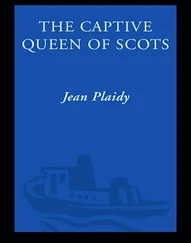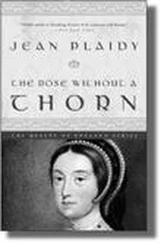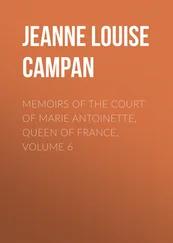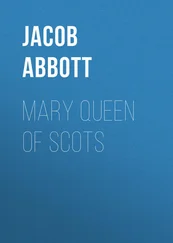Henry Bell - Life of Mary Queen of Scots, Volume 2 (of 2)
Здесь есть возможность читать онлайн «Henry Bell - Life of Mary Queen of Scots, Volume 2 (of 2)» — ознакомительный отрывок электронной книги совершенно бесплатно, а после прочтения отрывка купить полную версию. В некоторых случаях можно слушать аудио, скачать через торрент в формате fb2 и присутствует краткое содержание. Жанр: foreign_antique, foreign_prose, на английском языке. Описание произведения, (предисловие) а так же отзывы посетителей доступны на портале библиотеки ЛибКат.
- Название:Life of Mary Queen of Scots, Volume 2 (of 2)
- Автор:
- Жанр:
- Год:неизвестен
- ISBN:нет данных
- Рейтинг книги:5 / 5. Голосов: 1
-
Избранное:Добавить в избранное
- Отзывы:
-
Ваша оценка:
- 100
- 1
- 2
- 3
- 4
- 5
Life of Mary Queen of Scots, Volume 2 (of 2): краткое содержание, описание и аннотация
Предлагаем к чтению аннотацию, описание, краткое содержание или предисловие (зависит от того, что написал сам автор книги «Life of Mary Queen of Scots, Volume 2 (of 2)»). Если вы не нашли необходимую информацию о книге — напишите в комментариях, мы постараемся отыскать её.
Life of Mary Queen of Scots, Volume 2 (of 2) — читать онлайн ознакомительный отрывок
Ниже представлен текст книги, разбитый по страницам. Система сохранения места последней прочитанной страницы, позволяет с удобством читать онлайн бесплатно книгу «Life of Mary Queen of Scots, Volume 2 (of 2)», без необходимости каждый раз заново искать на чём Вы остановились. Поставьте закладку, и сможете в любой момент перейти на страницу, на которой закончили чтение.
Интервал:
Закладка:
The Kirk-of-Field, in which, says Melville, “the King was lodged, as a place of good air, where he might best recover his health,” belonged to Robert Balfour, the Provost or head prebendary of the collegiate church of St Mary-in-the-Field, so called because it was beyond the city wall when first built. When the wall was afterwards extended, it enclosed the Kirk-of-Field, as well as the house of the Provost and Prebendaries. The Kirk-of-Field with the grounds pertaining to it, occupied the site of the present College, and of those buildings which stand between Infirmary and Drummond Street. In the extended line of wall, what was afterwards called the Potter-row Port, was at first denominated the Kirk-of-Field Port, from its vicinity to the church of that name. The wall ran east from this port along the south side of the present College, and the north side of Drummond Street, where a part of it is still to be seen in its original state. The house stood at some distance from the Kirk, and the latter, from the period of the Reformation, had fallen into decay. The city had not yet stretched in this direction much farther than the Cowgate. Between that street and the town wall, were the Dominican Convent of the Blackfriars, with its alms-houses for the poor, and gardens, covering the site of the present High School and Royal Infirmary, – and the Kirk-of-Field and its Provost’s residence. The house nearest to it of any note was Hamilton House, which belonged to the Duke of Chatelherault, and some part of which is still standing in College Wynd. 24 24 Birrel’s Dairy, p. 6. – Laing, vol. i. p. 30.
It was at first supposed, that Darnley would have taken up his abode there; but the families of Lennox and Hamilton were never on such terms as would have elicited this mark of friendship from the King. The Kirk-of-Field House stood very nearly on the site of the present north-west corner of Drummond Street. It fronted the west, having its southern gavel so close upon the town-wall, that a little postern door entered immediately through the wall into the kitchen. It contained only four apartments; but these were commodious, and were fitted up with great care. Below, a small passage went through from the front door to the back of the house; upon the right hand of which was the kitchen, and upon the left, a room furnished as a bedroom, for the Queen, when she chose to remain all night. Passing out at the back-door, there was a turnpike stair behind, which, after the old fashion of Scottish houses, led up to the second story. Above, there were two rooms corresponding with those below. Darnley’s chamber was immediately over Mary’s; and on the other side of the lobby, above the kitchen, a “garde-robe” or “little-gallery,” which was used as a servant’s room, and which had a window in the gavel, looking through the town-wall, and corresponding with the postern door below. Immediately beyond this wall, was a lane shut in by another wall, to the south of which were extensive gardens. 25 25 Keith, p. 364. – Anderson, vol. ii. p. 67. – Goodall, vol. ii. p. 244. – Chalmers, vol. i. p. 203. – vol. ii. p. 180, and 271. – Laing, vol. i. p. 30. – and vol. ii. p. 17. – Whittaker, vol. iii. p. 258, and 283. – Arnot’s History of Edinburgh, p. 237. Whittaker has made several mistakes regarding the House of the Kirk-of-Field. He describes it as much larger than it really was; and, misled by the appearance of a gun-port still remaining in one part of the old wall, and which Arnot supposed had been the postern-door in the gavel of the house, he fixes its situation at too great a distance from the College, and too near the Infirmary. Sir Walter Scott, in his “Tales of a Grandfather,” (vol. iii. p. 187.) has oddly enough fallen into the error of describing the Kirk-of-Field, as standing “just without the walls of the city.”
During the ten days which Darnley spent in his new residence, Mary was a great deal with him, and slept several nights in the room we have described below her husband’s, this being more agreeable to her, than returning at a late hour to Holyrood Palace. Darnley was still much of an invalid, and his constitution had received so severe a shock, that every attention was necessary during his convalescence. A bath was put up for him, in his own room, and he appears to have used it frequently. He had been long extremely unpopular, as has been seen, among the nobles; but following the example which Mary set them, some were disposed to forget their former disagreements, and used to call upon him occasionally, and among others, Hamilton, the Archbishop of St Andrews, who came to Edinburgh about this time, and lodged hard by in Hamilton house. Mary herself, after sitting for hours in her husband’s sick-chamber, used sometimes to breathe the air in the neighbouring gardens of the Dominican convent; and she sometimes brought up from Holyrood her band of musicians, who played and sung to her and Darnley. Thus, every thing went on so smoothly, that neither the victim nor his friends could in the least suspect that they were all treading the brink of a precipice.
Bothwell had taken advantage of Mary’s visit to Glasgow, to proceed to Whittingham, in the neighbourhood of Dunbar, where he met the Earl of Morton, and obtained his consent to Darnley’s murder. To conceal his real purpose, Bothwell gave out at Edinburgh, that he was going on a journey to Liddesdale; but, accompanied by Secretary Maitland, whom he had by this time won over to his designs, and the notorious Archibald Douglas, a creature of his own, and a relation of Morton, he went direct to Whittingham. There, the trio met Morton, who had only recently returned from England, and opened to him their plot. Morton heard of the intended murder without any desire to prevent its perpetration; but before he would agree to take an active share in it, he insisted upon being satisfied that the Queen, as Bothwell had the audacity to assert, was willing that Darnley should be removed. “I desired the Earl Bothwell,” says Morton in his subsequent confession, “to bring me the Queen’s hand write of this matter for a warrant, and then I should give him an answer; otherwise, I would not mell (intermeddle) therewith; – which warrant he never purchased (procured) unto me.” 26 26 Morton’s Confession in Laing, vol. ii. p. 354; and Archibald Douglas’s Letter, ibid. p. 363.
But though Morton, refused to risk an active, he had no objections to take a passive part in this conspiracy. Bothwell, Maitland, and Douglas, returned to Edinburgh, and he proceeded to St Andrews, with the understanding, that Bothwell was to communicate with him, and inform him of the progress of the plot. Accordingly, a day or two before the murder was committed, Douglas was sent to St Andrews, to let Morton know that the affair was near its conclusion. Bothwell, however, was well aware that what he had told the Earl regarding the wishes of the Queen, was equally false and calumnious. Of all persons in existence, it was from her that he most wished to conceal his design; and as for a written approval of it, he knew that he might just as well have applied to Darnley himself. Douglas was, therefore, commanded to say to Morton, evasively, “that the Queen would bear no speech of the matter appointed to him.” Morton, in consequence, remained quietly in the neighbourhood of St Andrews till the deed was done. 27 27 Idem.
The Earl of Murray was another powerful nobleman, who, when the last act of this tragedy was about to be performed, withdrew to a careful distance from the scene. It is impossible to say whether Murray was all along acquainted with Bothwell’s intention; there is certainly no direct evidence that he was; but there are very considerable probabilities. When a divorce was proposed to Mary at Craigmillar, she was told that Murray would look through his fingers at it; and this design being frustrated, by the Queen’s refusal to agree to it, there is every likelihood that Bothwell would not conceal from the cabal he had then formed, his subsequent determination. That he disclosed it to Morton and Maitland, is beyond a doubt; and that Murray again consented “to look through his fingers,” is all but proved. It is true he was far too cautious and wily a politician, to plunge recklessly, like Bothwell, into such a sea of dangers and difficulties; but he was no friend to Darnley, – having lost through him much of his former power; and however the matter now ended, if he remained quiet, he could not suffer any injury, and might gain much benefit. If Bothwell prospered, they would unite their interests, – if he failed, then Murray would rise upon his ruin. Only three days before the murder, the Lord Robert Stuart, Murray’s brother, having heard, as Buchanan affirms of the designs entertained against Darnley’s life, mentioned them to the King. Darnley immediately informed Mary, who sent for Lord Robert, and in the presence of her husband and the Earl of Murray, questioned him on the subject. Lord Robert, afraid of involving himself in danger, retracted what he had formerly said, and denied that he had ever repeated to Darnley any such report. High words ensued in consequence; and even supposing that Murray had before been ignorant of Bothwell’s schemes, his suspicions must now have been roused. Perceiving that the matter was about to be brought to a crisis, he left town abruptly upon Sunday, the very last day of Darnley’s life, alleging his wife’s illness at St Andrews, as the cause of his departure. The fact mentioned by Lesley, in his “Defence of Queen Mary’s Honour,” that on the evening of this day, Murray said, when riding through Fife, to one of his most trusty servants, – “This night, ere morning, the Lord Darnley shall lose his life,” is a strong corroboration of the supposition that he was well informed upon the subject. 28 28 Lesley’s Defence in Anderson, vol. i. p. 75. – Buchanan’s History, p. 350. – Laing, vol. ii. p. 34.
Интервал:
Закладка:
Похожие книги на «Life of Mary Queen of Scots, Volume 2 (of 2)»
Представляем Вашему вниманию похожие книги на «Life of Mary Queen of Scots, Volume 2 (of 2)» списком для выбора. Мы отобрали схожую по названию и смыслу литературу в надежде предоставить читателям больше вариантов отыскать новые, интересные, ещё непрочитанные произведения.
Обсуждение, отзывы о книге «Life of Mary Queen of Scots, Volume 2 (of 2)» и просто собственные мнения читателей. Оставьте ваши комментарии, напишите, что Вы думаете о произведении, его смысле или главных героях. Укажите что конкретно понравилось, а что нет, и почему Вы так считаете.












